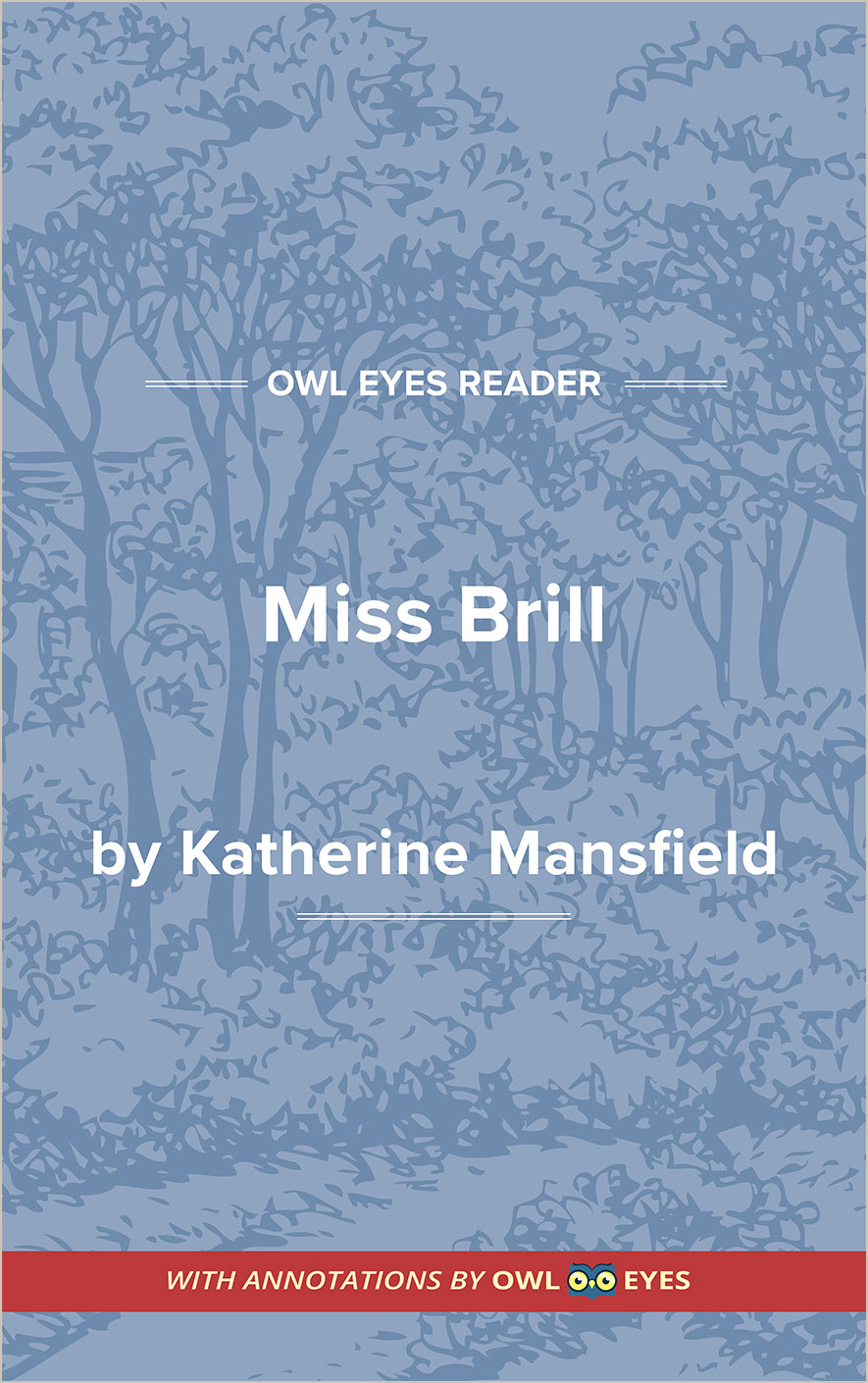Analysis Pages
Symbols in Miss Brill
Her Fur: Miss Brill’s fur symbolizes her interior landscape. She begins the story by speaking to the fur as if it were a living thing. This reveals her loneliness and isolation, and it also demonstrates her capacity for imagination. After she is rejected in the park, Miss Brill returns the fur to its small, dark box. She can’t look at the fur as she puts it away because she can only see its faded, ragged nature. The fur symbolizes Miss Brill herself by the end of the story: she too returns to her small, dark apartment and recognizes that she is shabby and old. The “crying” she imagines coming from the box could be interpreted as Miss Brill herself crying.
Orchestra: The orchestra symbolizes Miss Brill’s emotions. As the orchestra plays, Miss Brill feels more and more connected to the people around her.
Fried Whiting: While not physically in the story, the young girl uses the image of a dead, fried fish to refer to Miss Brill’s fur and, by extension, Miss Brill herself: The fish has no active purpose; Miss Brill lacks relevance in her society.
Symbols Examples in Miss Brill:
Miss Brill
🔒"Wasn't the conductor wearing a new coat, too?..." See in text (Miss Brill)
"she thought she heard something crying..." See in text (Miss Brill)
"almond it was like carrying home a tiny present—a surprise—..." See in text (Miss Brill)
"the ermine toque..." See in text (Miss Brill)
"her room like a cupboard..." See in text (Miss Brill)
"a fried whiting..." See in text (Miss Brill)

